
When Elisabeth Moss sat in class at the School of American Ballet, the then-teenager’s teachers could never have imagined that one day their star pupil would turn an elegant pas de deux into a deftly choreographed punch. From classical ballet to brawling? “It’s not a silly question,” says Moss, laughing.
As Peggy Olson in Mad Men and June Osborne in The Handmaid’s Tale, Moss was not usually required to throw more than a cup of coffee or a sideways glance. For her new role, as veteran British spy Imogen Salter in The Veil, screenwriter Steven Knight’s scripts featured carefully choreographed fight sequences that would have tested James Bond’s mettle.
“The ballet absolutely comes into play,” Moss says. “With memorisation and counts and choreography and rhythm, for sure. There is a kind of rhythm to fight choreography. It also helps with acting; there’s very much a rhythm to a scene, a rhythm to a film, and a sense of that really helps me as an actor and a producer and a director.”
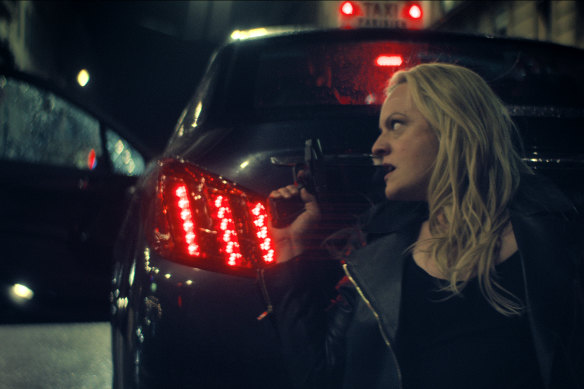
Elisabeth Moss gets physical in The Veil.Credit: FX/Disney+
One thing did have to change, however. For The Veil, she had to learn how to fight a little dirty, Moss says. “I had to lose the dance background a little bit because I tend to be very clean and everything has a bit of a perfection to it, and you have to mess it up a little bit and be not so right on the mark.”
For many reasons, The Veil challenges the status quo. It’s a compelling spy thriller from the man who wrote the Princess Diana biopic Spencer and, bizarrely, co-created the game show Who Wants To Be a Millionaire. And it upends what you think you know about the traditionally male-dominated spy genre.
Ian Fleming’s James Bond books and their film spin-offs, and the masterworks of British espionage novelist John le Carré, such as The Spy Who Came in from the Cold, Smiley’s People and The Night Manager, all propel us to a singular social construction: that spies are invariably men.
When The Veil was first offered to her, Moss sat down with Knight and talked it through; Knight emphasised Salter’s emotionally chameleonic qualities. “He described this character to me that was always playing different people and was trying on different characters and was able to shape-shift, and that was how she connected with the people that she needed to talk to,” Moss says.
It also mattered to Moss that the character did not fall back on tired gender tropes of women in action films: that they are damaged or wounded. “It came from a place of strength, it doesn’t come from a place of weakness or trauma, or she’s trying to compensate for something,” Moss adds. “She’s just really good at what she does, and that’s something that the male spies get all the time and the women sometimes not so much.”
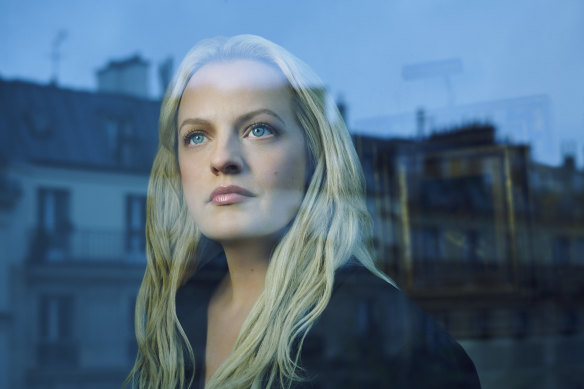
Elisabeth Moss plays a woman “trying on different characters” in The Veil.Credit: FX / Disney+
Significantly, and perhaps like plenty of young girls and boys who grow up watching spy stories, Moss had a long-held ambition to play one on the screen. “I’m a huge fan of the spy genre, I have always wanted to play a spy and an MI6 spy has an extra bit of glamour to it, which I was really excited about,” she says.
Researching the role, however, was a little trickier. “I read a lot of books, any kind of female spy book I could get ... but the thing about spies is they don’t necessarily always want to talk to you about what they do, so, it’s quite difficult to find them and get them to talk to you and tell you their secrets, for obvious reasons. So I [also] had to follow my instincts.”
The Veil begins with what looks like a traditional covert retrieval mission: Salter has come to a refugee camp to find a woman named Adilah El Idrissi (Yumna Marwan). Keeping spoilers to a minimum, the action later shifts to Paris, where we meet Max (Josh Charles), the CIA officer who is working with Salter on the case.
Between those two locales, Salter and El Idrissi spend the journey in a car, which allows the series to step into unconventional space: a two-hander in which the women try to identify cracks in each other’s armour. Under the deft hand of Australian director Daina Reid, who shares directing duties with Damon Thomas (Killing Eve), those scenes shine.
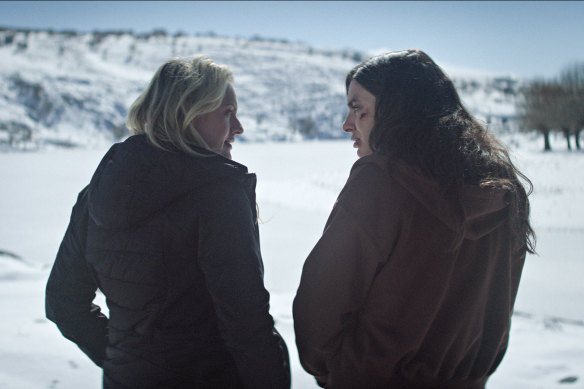
Elisabeth Moss and Yumna Marwan in a scene from The Veil.Credit: FX / Disney+
“Well, luckily they get out of the car,” Moss says, laughing. “Because I think it would be very difficult to maintain [that tone for] the entire thing. But I think that establishing them in this tight space together, in a space where they have to sit next to each other, they have to talk, they have to connect is such a fantastic move.
“In terms of proximity, they can’t get away from each other, and there’s no one else to talk to, so for Imogen, this is how she’s going to befriend this woman, this is how she’s going to get under her skin, this is how she’s going to connect with her. What I love is how you feel you know what the series is going to be, and then you go, oh no, it’s different now.”
‘The thing about spies is they don’t necessarily always want to talk to you about what they do.’
Elisabeth Moss
The concept of the series was to explore the friction between rival intelligence agencies in the theatre of international espionage. Which is why, for example, the tensions pivot on Salter’s relationship with Max, her CIA handler, as much as it does with El Idrissi.
“The thing that appeals to me most is when big, big, big international conflicts, events, boil down to individuals,” Knight says. “What I wanted to do with this was to take huge issues and boil it down to two people in a car driving through the snow, and the nature of the conversation affects the outcome for thousands of people. If you want the sharp tip of a drama, that’s what I wanted to do with this.”
Loading
Researching the series, Knight went to Paris and met with people working for the Directorate-General for External Security (DGSE), France’s lower-profile foreign intelligence agency, the equivalent of Britain’s MI6 and America’s CIA. “I heard some stories, as one does,” Knight says. “But it felt, to me, as if there’s something going on, and there is friction, and there is tension.”
As a character, Imogen Salter stands tall beside the characters Moss has drawn on a rich canvas over the years, such as secretary-turned-copywriter Peggy Olson in Mad Men and Detective Robin Griffin in Top of the Lake. Her most iconic role to date is June Osborne, a captive child-bearing servant in the dystopian post-American totalitarian patriarchal theocracy Gilead in The Handmaid’s Tale, who leapt out of the screen and into the wider culture.
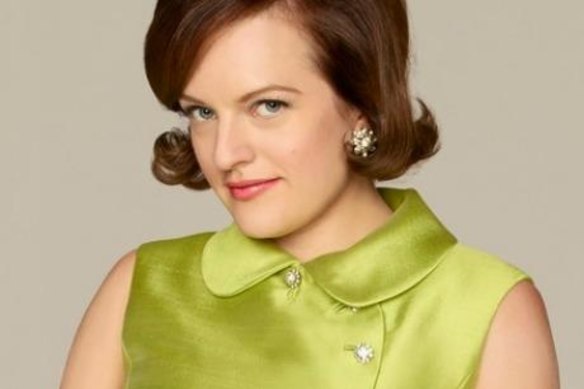
Elisabeth Moss as secretary-turned-copywriter Peggy Olson in Mad Men.Credit: AMC
The immortality of streaming means that somewhere out there, every day, someone is meeting those women for the first time. And in a sense too, for the actress, they survive as artistic ghosts, fragments of paint that remain in the corners of the canvas, regardless of how completely it is wiped clean when a role ends.
“I think the [connective] fragment is me,” says Moss. “I’m not an actor who feels that it’s totally necessary to erase every part of myself or to completely become a different person. I think for me, one of my strengths lies in actually using parts of myself and incorporating myself into characters. So every character is sort of part of me, and a facet, or a couple of facets, of me.
“I don’t really make those distinctions of, well, Peggy Olson is completely 100 per cent her own person and has nothing to do with me and has nothing to do with Imogen Salter. Of course, she has everything to do with Imogen because it’s still me and I’m still trying to use my strength and my experiences to tell the story.
“Of course, there are some characters that have more in common than others, and Peggy’s very, very different from Imogen. But there are moments, there are moments for sure, that I feel their similarity.”
Moss, 41, who copped flak on both sides of the pond about her accent as the New Zealand-born detective living in Sydney in Top of the Lake, was determined to pull off the British accent this time around. Was there a trick to teaching herself how to speak in an accent that British viewers would buy?
“Oh, no, no, no trickery,” she insists, “just a lot of hard work and practise. You can’t trick people into this, especially the British. So you have to just keep working at it and working at it and working at it, and just be very, very diligent.

Elisabeth Moss embraced the freedom of her character in The Veil.Credit: FX / Disney+
“I said yes to the job in August [2022]. I started the dialect in September [and] worked on it pretty much every day up until we wrapped in June ... I put a lot of pressure on myself and I just spoke in it all the time. We had a lot of British crew as well, which helped. That’s what helped me when I did Top of the Lake. We had a lot of Australian and New Zealand crew, and so you’re constantly surrounded by it.”
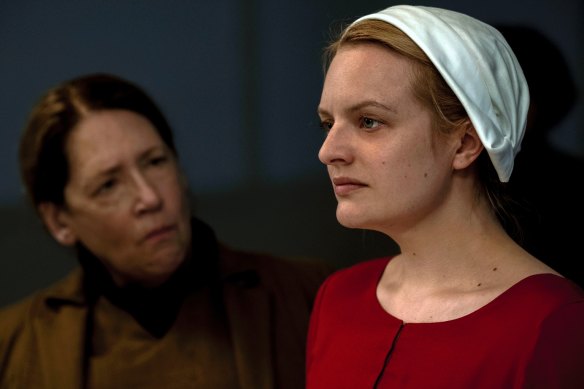
Ann Dowd and Elisabeth Moss in a scene from The Handmaid’s Tale.Credit: George Kraychyk / Hulu
Production on The Veil finished in mid-2023, and Moss’ next project – the final season of The Handmaid’s Tale – was delayed by the industrial action in Hollywood;it will begin filming in the next few months.
Returning to the role is a significant shift after The Veil. “They’re completely different, and they feel completely different, physically,” Moss says. “[The Handmaid’s Tale] is a story about a woman who has been put in a box and who is very constricted and who has been ... conditioned to live a life where she is not herself any more, stripped of everything, stripped of an identity.
“And then you have a woman, Imogen, whose gift, whose strength, whose life is about the freedom to play different identities and to be different people and to try on different people and to use that to get what she wants.
“If we had longer we could go really deep into the parallels, but to just speak of the dissimilarities, Imogen is quite free, and it was so fun for me to do something so different. I know actors say that all the time, but this really was so different, it’s international, the way the character looks, speaks, her attitude, her sense of humour.
“June (in The Handmaid’s Tale) has all of those things, but it’s coming from a dark place. For June it’s coming from a place of trauma and for Imogen, it is not. Imogen, actually, is just funny. She’s got a great sense of humour and she’s really good at what she does. She’s powerful. I loved the opportunity to do that and to have a little bit of fun, honestly.”
The Veil is on Disney+ from April 30.









 Add Category
Add Category